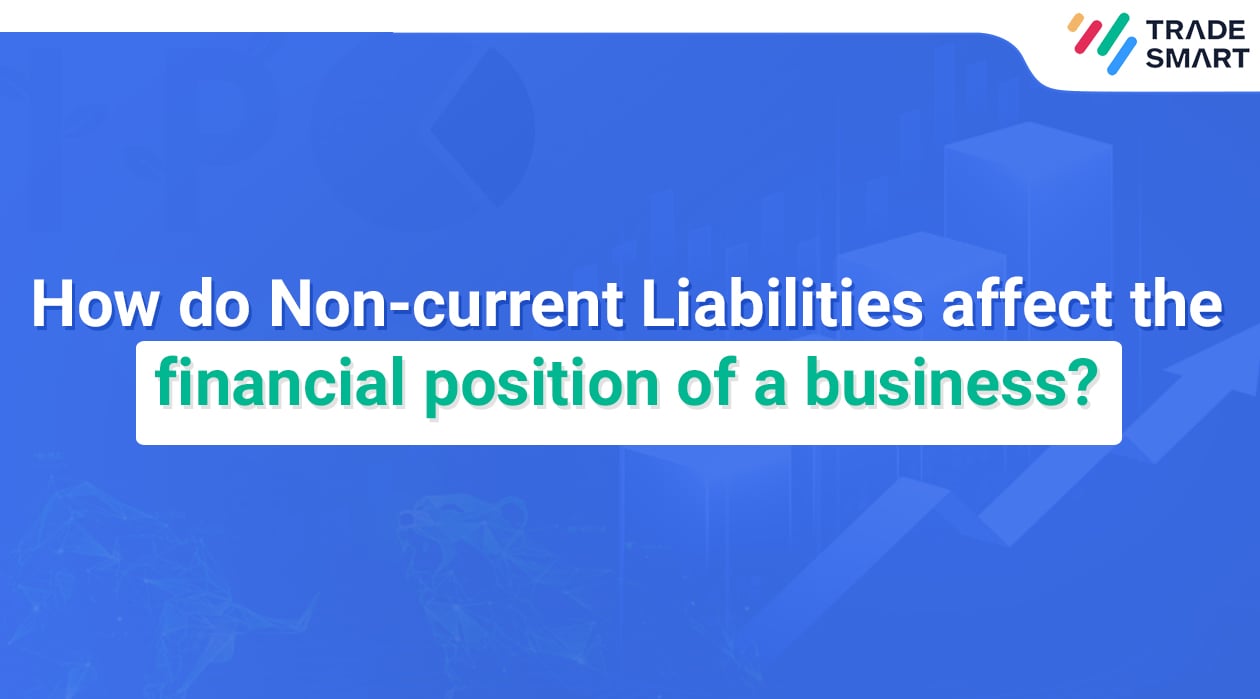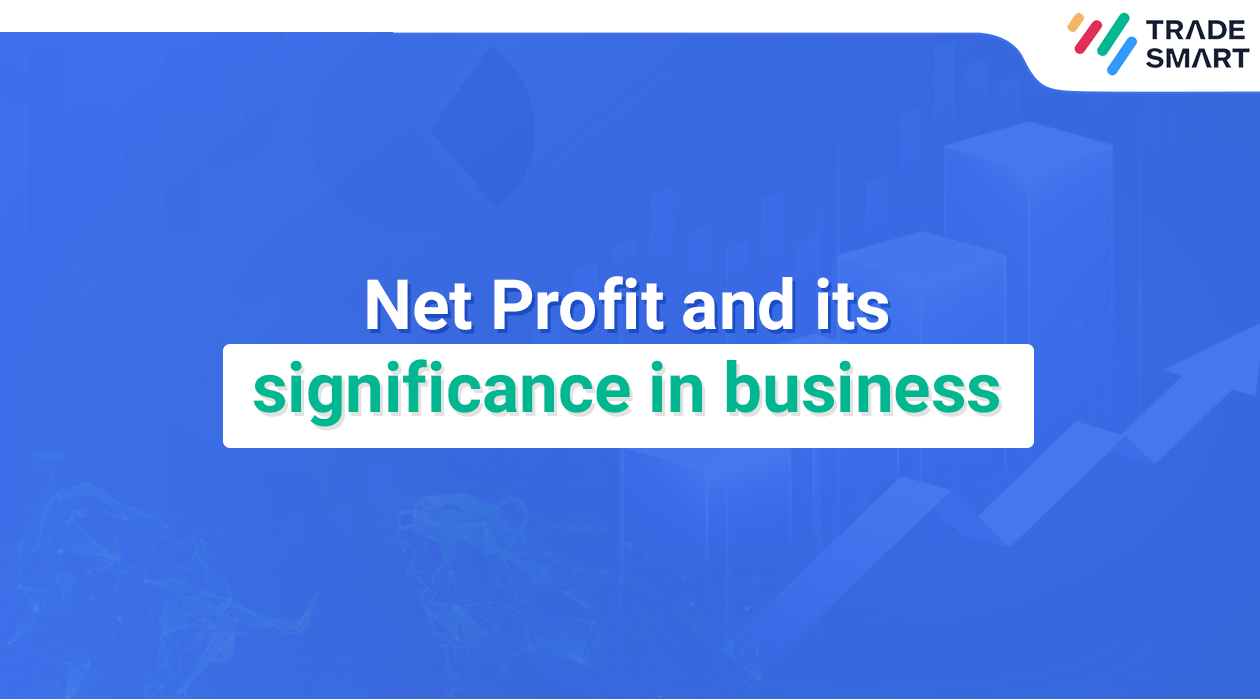Introduction
Liabilities come in many forms, including accounts payable, loans payable, accrued expenses and long-term debt.
Liabilities are obligations that are payable to a person or an entity.
Let’s look at the different types of liabilities and how they impact the bottom line of businesses, both large and small.
What Is Liability?
Liabilities represent potential future costs for a company or business. A liability can take many forms, including loans, accounts payable, or debt from a legal settlement. There are two main types of liabilities: Current and Non-current liabilities.
Current liabilities must be paid off within one year, including money owed for accounts payable and short-term debt. Long-term debt is classified as noncurrent liabilities, which refer to debts with maturities longer than one year. For example, bonds issued by a government would fall into this category because it is not expected to be paid back for several years.
The importance of liabilities to businesses cannot be overstated. For a company or business, liabilities make up part of its assets. It is possible to have negative assets if you have more liabilities than assets. A company’s level of debt impacts its ability to access new capital from lenders because higher debt levels imply less money available for operations. On top of that, it also influences how the company is valued by investors when they consider whether to buy stocks or bonds in that company.
Types of liabilities
There are three types of liabilities—current, noncurrent, and contingent, but we mainly talk about the two liabilities. Noncurrent liabilities do not have to be repaid within a year; current liabilities are debts that must be.
Noncurrent liabilities include long-term loans such as mortgages, car loans, property taxes and loans on which you are not currently paying interest but will have to pay interest later. For example, if you own a house with an outstanding mortgage loan that you have yet to pay off, it’s considered a noncurrent liability.
Keeping track of current and noncurrent liabilities is essential to stay on top of your financial obligations. If you don’t, your business could go under or face severe consequences regarding its credit rating.
Current liabilities (short-term liabilities)
A current liability is an obligation that will come due within a year. As the name suggests, short-term doesn’t necessarily mean that you have to pay it off in one year; instead, it’s an amount you must have on hand by year’s end to pay down your debts. Current liabilities are listed on your balance sheet under assets. The basic formula for calculating current liabilities looks like this:
This may seem simple enough, but let’s take a closer look at each component. We’ll use TCS as an example throughout our discussion. We’ve provided links below so you can follow along as we discuss each element in more detail—and we also encourage you to check out our financial statements tutorial for additional information about how companies present their financial data!
Total current liabilities = Accounts payable + Accrued expenses + Short-term debt + Current portion of long-term debt.
The formula for calculating short-term debt looks like this: Current portion of long-term debt: Long-term obligations with maturities longer than one year are considered noncurrent liabilities, which we’ll discuss later. However, some long-term debts do come due within one year; these debts are called current portions of long-term obligations.
Wages Payable is a catch-all for any money the business owes its employees. Wages payable could also include bonuses or reimbursements for specific expenses. Any money due from employees should be listed on your balance sheet under liabilities unless it’s owed to shareholders (in which case it would be listed as shareholder equity).
Interest is an expense that can be either an income or an expense. For a business, interest payable will most likely show up as a current liability. That’s because businesses use short-term loans for working capital and inventory, which means there’s usually only enough cash to cover these liabilities for less than one year.
The dividends payable account reflects all dividends that a corporation owes to its shareholders. This would typically include short-term obligations of less than one year. When you look at a corporation’s balance sheet, you can see how much money it is obligated to pay its investors. That’s helpful because it can show if there are any liabilities on a company or if it has plenty of resources to fund growth.
Non-Current Liabilities (long-term liabilities)
Noncurrent liabilities consist of long-term debts and other financial obligations, such as leases and pension obligations, that extend beyond one year. Suppose a business has Rs. 1 crore in total assets and Rs. 1 crore in debt but has several operating leases, for example. In that case, its total current liabilities will exceed its total current assets. The difference is composed of noncurrent debts, so noncurrent liabilities would equal 2 crores (deficit of 1 crore-plus leases of 1 crore).
An example of a noncurrent liability would be a lease on office space expiring next year, even though it won’t come due for another 12 months. Hence, businesses record it on their balance sheet because it relates to future events.
If something doesn’t have an original maturity date (like accounts payable), then its maturity date will be whenever you pay it off. When liabilities relate to specific assets that aren’t owned by a company, such as paying back loans from using someone else’s money, we refer to them as secured liabilities. Examples of secured liabilities include mortgages and home equity lines of credit. Because these items are related to assets, their balances change along with asset values.
Noncurrent liabilities include mortgage loans, debentures, deferred tax payable, bonds, derivative liabilities, etc.
Long-term liabilities = liabilities – current liabilities
-
Mortgage payable/long-term debt
In a personal balance sheet, assets must equal liabilities plus equity. The definition of assets includes current and future assets, such as savings accounts, property or vehicles owned by you (or your company), inventory on hand, and equipment used to generate revenue. Debts include real estate mortgages, loans from financial institutions, and credit card balances. When total debt is higher than total assets, it’s negative equity—also known as insolvency—which means you owe more than you own.
In accounting, deferred tax payable is an account that records all of a company’s liabilities related to income taxes. This number equals total income tax expense minus current income tax payable. The deferred tax payable account helps businesses ensure they are not over-or under-paying their future corporate income taxes by accumulating short-term costs in a convenient location instead of spreading them out among multiple, less accessible accounts. It also allows for easier tracking and allocation of expenses by business function.
The amount of money you’ll receive in benefits after leaving your company can vary dramatically, depending on your work environment. The most common forms of post-employment benefits include health insurance, life insurance, disability insurance, dental insurance, vision coverage, and 401(k)s. Take some time to research these different types of coverage before deciding which plan is best for you (especially regarding 401(k)s). You might be surprised by how much more valuable it is than your salary at first glance.
With derivative liabilities, many businesses are looking to avoid accounting for these items as liabilities right now. Instead, they wait until the expiration of a contract before accounting for them. This means a derivative liability is classified as an asset on one balance sheet entry and then reclassified as a liability when it expires. For example, suppose a business buys specific securities from another party that expires in five years with an option to sell them back at 100% of the original value within two years. In that case, those securities are currently recorded at 100% value on their balance sheet. Still, they will be classified as noncurrent liabilities (in most cases) upon expiration (or maturity) date—in other words, two years from now.
Contingent liabilities
A contingent liability is a potential loss that may or may not occur, depending on what happens in the future. In other words, if something happens, it’s a claim against your company. An example of contingent liability is medical claims for which you are likely responsible but haven’t been filed yet.
While you don’t have to pay off contingent liabilities now, they can still impact your business financially—for example, by increasing your risk of going bankrupt if too many such claims pop up. Liabilities that do not appear on your balance sheet because they have not yet arisen are called potential liabilities. You can think of current liabilities as your operating expenses while keeping an eye out for potential liabilities and new ones all along.
Contingent liabilities could be written off if it is determined that no payment will be made. Suppose such a determination cannot be made because of insufficient information. In that case, such contingencies should continue appearing on company balance sheets until all facts are known, or it becomes apparent that no further expenses will result from these events.
The term contingent means that something could happen in the future. At the same time, liability refers to any debt obligation for which you’re liable (i.e., if you borrow money from someone else).
Contingent liabilities are often excluded from net income because their ultimate amount cannot be determined with certainty. However, suppose there’s a reasonable possibility that these obligations will be paid in full by year-end. In that case, these amounts should be included in net income (and as current liabilities) because they represent an outflow of cash within one year.
Examples of Liabilities
Invoice Bookings/Unpaid Invoices, Credit or Loans payable, Unearned income such as fees due to service but have not been completed yet. Fixed Assets, if sold, will be recorded as gains or losses.
Current Liabilities formula = Total Current liabilities+Total Long Term Liabilities – Cash Balance – Short Term Investments -Inventory value of the company. For example, if current liabilities are Rs. 10,000, and total long-term liabilities are Rs. 5,000, then there is a need to improve current liabilities, which means that more money is required to fulfil them by companies bank balance or assets sales/investments, etc.
Companies’ financial statement accounts show what an organization owns (Assets) and what it owes (Liabilities). Assets include cash, inventory, buildings, land, and investments, while liabilities represent unpaid bills. All of these are grouped into three categories; Current Liabilities (payable within one year), Long-Term Liabilities (payable over time), and Shareholders’ Equity (company’s net worth).
Since businesses use financial statements to manage their operations and plan for future growth or development, it is essential to understand how each component affects business operations.
What Are Liabilities in Accounting?
So, what is a liability in accounting? Simply put, liabilities are debts that a business or company owes. Businesses usually have several different types of liabilities, such as short-term (which typically refers to debts that will be paid off within one year) and long-term debt (which relates to obligations with a term longer than one year).
The liability designation in accounting can refer to several things. Still, generally speaking, it refers to any amount of money or item owned by a company for which it is legally obligated. It’s also important to remember that everything in accounting has double-entry bookkeeping implications.
A bank loan or line of credit is one of two main types of liabilities for a business. The other kind is the debt you’ve raised from other investors, typically in exchange for shares in your company or preferred stock. Think of bank debt as liabilities that involve another party—the bank—and therefore require you to share your ownership in your business with them.
Most businesses use some form of debt financing, such as a mortgage or line of credit. Mortgage debt is typically used for long-term investments, like buying land or building a factory. Most small businesses don’t usually have enough assets to put up for collateral against a large loan; instead, they use equity to secure their loans. A loan secured by collateral is called an asset-based loan, while an unsecured personal loan is known as a liability.
Many businesses have to pay their vendors. Most companies opt for their account payable to provide a buffer between when a company pays its vendors and when it receives payment from its customers. This is especially true if you run an e-commerce site or some other business that needs inventory on hand before it begins selling. In these situations, the accounts payable—the number of money businesses owe to vendors—can get pretty high quickly.
Liabilities vs Assets
Both liabilities and assets fall on either side of the balance sheet, but their relative values help determine your company’s financial health. Think of them as scales: If you have more liabilities than assets, it’s a bad sign—like lifting weights on one end while putting nothing back on the other.
On the one hand, net worth is a snapshot in time: If a company is getting off its feet, it might have few assets but lots of future potentials. But suppose a company has more liabilities than assets for an extended period (and can’t explain why). In that case, investors will panic about potential bankruptcy—or its value isn’t maximized correctly.
One key difference between liabilities and assets is how long they last. Assets like buildings or equipment last longer than liabilities like loans or accounts payable, which means companies with much debt may be less stable than those with little debt over time. Another difference between assets and liabilities is whether they’re tangible or intangible:
An asset like cash counts toward your net worth even though it doesn’t take up space in the office; intangibles like goodwill don’t matter because there’s no physical manifestation of goodwill on paper. However, the most significant difference between assets and liabilities is how they affect cash flow.
Liability payments come out of cash flow every month; asset purchases generally don’t until the company sells them later down the line. For example, if Reliance Industries buys a building for Rs. 2 crores and puts it under your corporation’s name, you’ll need to pay taxes on that Rs. 2 crores. You’ll also need to pay property taxes yearly based on your local government’s charges.
However, when Reliance industries sell that building five years from now for Rs. 2 crores, all of that profit goes straight into Reliance’s pocket—not into any other part of business operations. When deciding what types of assets and liabilities make sense for a company’s model, it’s important to remember. Does the company plan to hold onto these items indefinitely? Or do they plan to flip them quickly for maximum profit?
Assets−Liabilities=Owner’s Equity
In the majority of cases the situation, the account equation is usually described as:
Assets=Liabilities+Equity
How liabilities work
A liability is an obligation or debt. It is recorded on a balance sheet as a decrease in assets (because it represents the use of funds) and an increase in liabilities (because it means an obligation to repay funds). Liabilities can be considered debts that have not yet been paid. They include money owed to banks, suppliers, employees, or tax authorities. In accounting terms, liabilities fall into two broad categories: current and long-term liabilities.
Current liabilities cover short-term debt such as accounts payable, wages payable, and income taxes. Long-term debt – such as mortgages, loans, and bonds – are included under long-term liabilities. Some debts represent obligations that will never be repaid; these are classified under other types of noncurrent liabilities.
For example, deferred tax liabilities refer to future taxes that must be paid but for which no payment is due. The opposite of liability is an asset. Assets are things of value owned by a business, including cash and property.
Assets must equal liabilities plus owners’ equity on a company’s balance sheet — if one side goes up, another side must go down. If the company owes Rs. 10,000 but owns Rs. 15,000 worth of equipment and furniture in company office space, the company’s net worth would be Rs.5,000 (Rs. 10,000 – Rs. 15,000 = – Rs. 5,000). This figure indicates how much the company would lose if the business failed and had to pay off all its creditors with what was left over after liquidation.
Liabilities vs Expenses
Sometimes, business owners get liabilities and expenses confused. The difference is that liabilities are expenses that you can’t write off on your taxes. This means you have to pay for them even if they aren’t deductible on your income tax return.
Liabilities include accounts payable (money you owe other businesses), accrued expenses (expenses that have already happened but need to be paid), and loans or mortgages on property owned by your business. Insurance is another liability. It helps protect against risk and covers such things as property damage, theft, lawsuits, etc., but it also must be paid whether or not you can claim it as a deduction for income tax purposes.
For example, say your business owes Rs 30,000 to Abc Corp., but you aren’t able to deduct that expense from your taxes because it isn’t a deductible expense under tax law. However, even though you can’t claim that Rs 30,000 on your income tax return, you still have to pay it back to Abc Corp. to keep that business relationship intact.
That makes it a liability even though it isn’t an expense in taxes or deductions. Your bank loan is another liability because it needs to be paid back even if there isn’t any interest charged (and most loans won’t have any). It’s still money you have to pay back either way, with nothing left over for a deduction on your taxes.
Another example is what happens when one small business has a negative month—meaning they lose money instead of making it. If they had liabilities totalling Rs. 5,000, and expenses totalled Rs. 10,000 during that month, their profit would be -Rs. 5,000 (Rs. 10K expenses – Rs. 5K liabilities = -Rs. 5K profit).
However, if they had just expenses totalling Rs. 10K without any liabilities during that same month (-Rs. 10K expenses), their profit would be +Rs. 1K (Rs. 0 liabilities + -Rs. 10k expenses = +Rs. 1k profit) despite losing money overall. That said, not all businesses have liabilities like mortgages or loans on the property. That’s because most businesses don’t own the property outright (for example, an office building or factory) and don’t need to borrow money to get started.
Relation between liabilities and assets
One of the most common ratios that bankers use to determine whether a business is a good fit for a loan or not is called gearing, also known as leverage. Gearing refers to how much of an organization’s capital comes from liabilities rather than shareholders’ equity (the money invested by investors).
For example, Company XYZ has 1 lakh in shareholders’ equity and another 5 lakh in debt. Gearing refers to how much of that 6 lakh total capital (1 lakh + 5 lakh) is financed by debt (in our example, it would be 5 lakh). Banks prefer companies with high gearing levels because their assets are secured against their debts. In other words, if Company XYZ defaults on its loans, banks could seize its assets and sell them off to recoup some of their losses.
This makes businesses with high levels of gearing safer investments for banks. To calculate gearing, you divide a company’s long-term debt by its shareholder’s equity. If Company XYZ had no long-term debt, its calculation would look like: 1 lakh / 1 lakh = 100% If Company XYZ had no long-term debt but had short-term debts instead, its calculation would look like: 0 / 1 lakh = 0%
How Do You Know If Something Is a Liability?
One way to tell if a financial liability is dragging you down is by determining if it’s eating up a sizable portion of assets. Liability doesn’t have to mean bad, however. It just means that for your business to grow and flourish, it needs help from outside sources—others need to take care of the liability for your business (and assets) to remain safe.
Liabilities of Discontinued Operations:
The reason is simple. If a company continues to lose money, it may not have enough assets to cover its liabilities (amounts owed). In such an event, or if there is another unexpected development such as a natural disaster that destroys valuable property, a company could end up being forced into bankruptcy. By tracking these liabilities separately from current assets, you’ll be able to make well-informed decisions about whether it makes sense for your business to continue in any given situation.
How Do Liabilities Relate to Assets and Equity?
In business, an asset is something that provides a future economic benefit. The company’s assets typically include cash, inventory, accounts receivable, fixed assets such as equipment and buildings, intangible assets such as goodwill or patents, stockholder equity (net worth), and outstanding debt. A liability is an obligation of a business that obligates it to pay some other entity.
For example, if company A buys supplies from another company B on credit instead of paying with cash, company A account payable is a liability. If a company borrows money from a bank to expand business operations or takes out a loan to purchase real estate for business use instead of paying cash for these items with the company’s funds (business’s equity), the company owes money.
Know Negative Liabilities
First, determine whether you’re dealing with liability in legal terms. For example, if you agree to do work on someone else’s behalf and they refuse to pay you because they don’t like how it turned out, that’s not your liability—that’s theirs. It could be an asset and a liability, but it’s not technically a liability until there is a judicial ruling. Second, remember that liabilities can change over time (for example, if interest rates drop).
That said, what matters most is whether or not you have money or capital tied up in something that has or could end up costing more than its fair share of resources. If so, it’s almost certainly a liability. As you evaluate assets and liabilities from both perspectives, consider these other issues: What are they worth? How long will they last? How quickly will they wear out or become obsolete? What costs might I incur if I need to replace them now rather than later?
Finally, note that even if something doesn’t currently cost you or a company anything extra to own it, that doesn’t mean it isn’t a liability. For example, many people have made significant investments by buying property where they live at a low price while rent prices are high. Owning property can turn into one of your greatest assets over time. Still, when you first buy it and make payments on mortgage loans for years before any appreciable equity is built up–it’s often seen as one of your biggest liabilities.
What’s the Difference Between Liabilities and Debt?
One of the most common mistakes entrepreneurs make is confusing liabilities with debt. It’s easy to understand how that happens, however. Liabilities and debt are very similar because they represent something you owe to someone else. Still, liabilities are recorded on the balance sheet, while debt is recorded on the income statement. The difference between liabilities and debt is that a liability represents an obligation you have due to past actions. In contrast, debt represents an obligation due to a loan or payment made in exchange for goods or services provided by someone else.
Conclusion
Liabilities refer to debts or commitments that are a part of a company’s financial records. Liabilities appear on a balance sheet and can have many different forms, depending on your situation.
As mentioned above, long-term liabilities may consist of loans or bonds due in more than one year. The most common liabilities on balance sheets include accounts payable, which refer to an organization’s obligations to pay vendors for items bought on credit; notes payable.
Which indicates that an organization owes money to another party (such as bondholders), accrued expenses, taxes payable, rents payable, dividends payable and capital leases. Understanding these concepts is important because they help you understand how liquid (or how available) your cash is at any given time.











